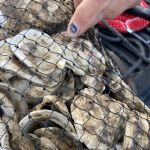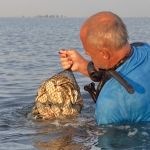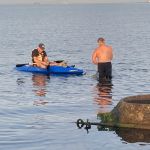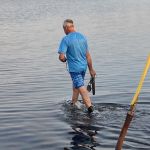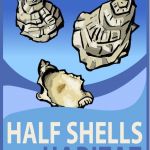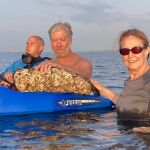Great South Bay Oyster Project
Photo Gallery
Recent Progress
Volunteer
Habitat Restoration

Habitat Restoration
We advocate for healing the creeks that feed our bay, for bay-friendly yards, for helping to return a shellfishing industry to the Great South Bay, and for the deployment of modern wastewater treatment technologies to address the problems caused by 500,000 cesspools and septic tanks, as well as the 197 large scale septic systems in malls, apartment complexes and locally.
Volunteer
Lend a hand! Join our Oyster Project Team and help revive The Great South Bay.
Partnering With Oyster Growers
Of course, nothing happens without cleaner water. That is why getting rid of our cesspools and septic tanks, healing our creeks, tackling runoff, and practicing natural lawn care is so important.
Please contact us with any suggestions you may have. You can also donate our efforts. We want to apply the latest techniques in aquaculture to revitalize our bay, our economy and our local culture.
We advocate for healing the creeks that feed our bay, for bay-friendly yards, for helping to return a shell fishing industry to the Great South Bay, and for the deployment of modern wastewater treatment technologies to address the problems caused by 500,000 cesspools and septic tanks, as well as the 197 large scale septic systems in malls, apartment complexes and locally.
Where You Can Get Fresh, Long Island Blue Point Oysters
- Neguntatogue Oysters (Lindenhurst) – call or text Keith & Nicole at 631-275-8046
- Blue Island Oysters (Sayville)- Call Chris at (631) 563-1330 for availability
- Maris Stella Oysters (Captree) – call or text Sixto at 516-939-5545
- Little A’s (Bay Shore) – call or text Michael at 917-526-1900
- Red Tiger (West Islip) – call or text Lou at 646-228-6273
The Making Of An Oyster Sanctuary
Site Evaluation
Establishing the Sanctuary
Enhancing and Measuring for Success
Recent Progress On Habitat Restoration
Breach Report 08-07-13 : CBS News Reports “Mounting Debate,” Features County Legislator vs. Almost Everyone Else
It has become the reflexive habit of news organizations to frame every news item as a conflict, a controversy. Without that, there is no story. You could be in a lecture hall for two and a half hours, listen to a panel, then have public statements from a crowd of 600. The one person who stands up to say that the breach must be closed because his apartment complex was flooded this winter is the person how gets surrounded by microphones. That’s exactly what happened in March at a Town Hall in Bellport about The New Inlet. Nearly unanimous support after 2 1/2 hours, but I had reporters actually say to me, ‘where’s the conflict/story in that?’ When we wade into public policy debates, where the science most matters, it is truly corrosive to science and civic life to see this happen.
The Breach Report 8-05-13: Fisherman Michael Busch Interviewed By News 12 on The Old Inlet
Michael Busch of Bellport takes News12 out to The Old Inlet/Breach to show them how much healthier that part of the bay has become since Sandy created it six months ago — fluke, sea turtles, seal, osprey, clear waters.
Long Island’s South Shore Wastewater Infrastructure Problem
Carl LoBue's posts on the Save The Great South Bay Facebook page always get me thinking, and googling. And this one is no exception: Carl LoBue, on the relationship between the Bay Park Sewage Treatment Plant and Point Lookout seaweed: Although the configuration of...
Mapping The Rate of Septic Tank Seepage / Polluted Water Flow On Long Island
Our friends at Peconic Baykeeper are asking the government to start by tackling the biggest and dirtiest septic systems on Long Island. As it stands, Peconic Baykeeper has filed suit against the NYSDEC for failing to include nitrogen limits in permits as required by the Clean Water Act. When presented with Peconic Baykeeper’s 200-page petition in September, the NYSDEC came back six months later with a half-page note asking for more information on the 1,338 sites. Given the scale of the problem, we need a much greater sense of urgency if we are to save Long Island.
Is Mosquito Spraying Killing Crustaceans?
Nice to see our Peconic Baykeeper, Kevin McCallister being interviewed by News12 on the topic of aerial spraying of larvicide for the control of mosquitoes. Kevin relays anecdotal reports that crabbers are bringing up dead crabs after mosquito spraying by the County...
Local Filmmaker Seeks Support for Documentary About Long Island Pollution
Save The Great South Bay wishes Chris Casey all the best in his efforts to fund his film, “Air, Land, Water: The Environmental Challenges Facing Long Island.”
Visit his site at LongIslandPollution.com. It well describes what we are facing. Chris, we all look forward to getting to know you. Stop by at our STGSB Facebook Group Page .

